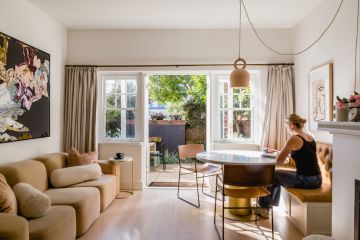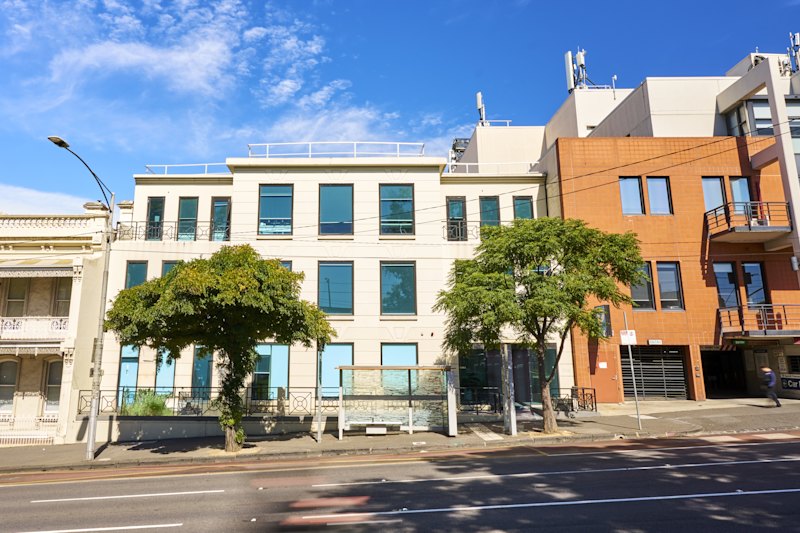Experts reveal the worst renovations in heritage properties

Despite its relatively young age, Australia has a rich architectural history worthy of preserving.
Unfortunately, due to the decline in speciality tradespeople and materials commonly used in older properties from the mid 1800s to 1940s, once a period home’s features are altered, it is unlikely these can ever be recreated.
Here, property experts share anecdotes detailing the worst renovation jobs they’ve witnessed in architecturally significant homes, some of which they’re even guilty of themselves.
1. Removing original timber windows
“Sadly I see this often, where the original timber windows of a Victorian terrace are ripped out and replaced with aluminium windows! Not only does this ruin one of the finest features of a Victorian terrace, it usually doesn’t stop there, with the window size and symmetry also changing.
“Leaving the front facade with its period features allows it to sit well in the street and retain its character and value.”
– James Treble, interior designer and presenter

2. Looking for a quick fix
“When I first started out renovating, I didn’t appreciate the value of genuine period features. My first inclination was to rip everything out and put in modern fixtures and fittings.
“In one Federation-style house, I distinctly remember taking out all the decorative cornices because they had peeling paint that would have been time-consuming to fix. And in a worker’s cottage, I decided to just carpet over the old floorboards because they seemed like too much hard work and cost to repair and polish up. Never again!”
– Cherie Barber, founder of Renovating for Profit and The Living Room presenter

3. Mixing modern with deco
“Our first renovation, and the first property we purchased, was a gorgeous and iconic art deco apartment in Prahran. The apartment block had two levels with a lovely external staircase and walkway connecting the eight apartments. Unfortunately, the once beautiful terrazzo tiles had been covered with a dreadful grey non-slip surface which ticked the box for OH&S but certainly not for aesthetics! I have since heard the current owners painstakingly removed it and apparently it looks amazing. I only hope someone hasn’t fallen down the stairs!
“Another pet hate … covering a beautiful bagged internal brick wall with plaster. Give me character over plaster any day!”
– Liz Montgomery, director of Bon Habitat

4. Dividing rooms with feature detailing
“One of the things that we often see, especially in the larger homes, is that they have been compartmentalised into flats and once ornate, grand rooms have been carved up and reduced to a myriad of smaller spaces. Often, false ceilings have been installed at a lower height and intricate plasterwork destroyed in sections by new partitions.
“… On one project, the original plaster name plaque of the house had been destroyed by neglect and we had to research the house and take a mould of existing remnants on site to try and replicate and replace what once existed. On another project, beautiful Victorian plasterwork had been removed from half a ceiling as the room had been divided into two.”
– David Hicks, interior designer

5. Installing imitation period features
“Too many people want to replicate parts of double-fronted Victorian terraces to try and create the look, and it never ends well. Modern additions to heritage homes that are well considered actually help highlight the existing period features.
“…We also see awful examples of people fitting in whatever shape they can get into council setbacks and sightline constraints on heritage house sites, even though the shapes left over often create terrible streetscapes. Maximising space is important on small blocks of land, but equal consideration should be given to how it will look as well.”
– Toby Ewert, director of Ewert Leaf (pictured on the left)

6. Altering an old exterior
“One of our first homes we purchased in Brunswick was a little single-fronted Victorian terrace that had been updated in the 1990s. All the cast iron fireplaces had been removed and boarded up. The original timber floorboards had been pulled up and replaced with a carpeted concrete slab. Even the decorative archways in the hallway had been removed and squared off with plasterboard. Needless to say, these were the first things that we reversed when we started our renovation.
“…One of the most heart-breaking renovation fails we have seen is a beautiful old Californian bungalow that had been covered up with a new brick veneer exterior in the 1980s which completely stripped the home of its original character.”
– Amanda Ayres, director of Amanda Ayres Interiors

7. Disrespecting proportions
“I once worked on one of the oldest houses in Brisbane. It had had many different lives, one as a nunnery. The original Queenslander house had verandahs to all four sides, but they enclosed these verandahs and turned them into tiny little bedrooms for the nuns to sleep, removing all the original verandah detailing. It was heartbreaking to see how much original work had been lost.
“I hate seeing a character home that is raised and loses all its original proportion. Most of our old houses are a deliberate and delicate balance of proportion, and unless it’s raised with careful consideration of this, you can lose so much of the original character.”
– Rebekah Hurworth, CEO and founder of My Family Home Experts

8. Going overboard on the DIY
“We refurbished a home that was originally a post-war brick veneer dwelling that had been updated in the 1980s. The previous owner had installed some feature decorative columns to the living area that we discovered were PVC pipes painted in a fabulous shade of 1980s teal. Needless to say, they had to go.”
– Katherine Kemp and Hanna Richardson, principals at ZWEI

9. Choosing bold exterior colours
“I’ve seen many homeowners render the front and swap out windows and front doors without looking into heritage rules that may apply to a particular street. This is a shame because it impacts on the entire streetscape and can look really out of place.
“In a particular street in the inner west of Sydney, there is an electric blue house with bright red woodwork trims. It’s a bit of an eyesore! Softer, more neutral colours tend to bring out the true character of a period facade much better than bold or bright colour selections.”
– Justine Stedman, director and principal stylist at Vault Interiors

We recommend
We thought you might like
States
Capital Cities
Capital Cities - Rentals
Popular Areas
Allhomes
More







